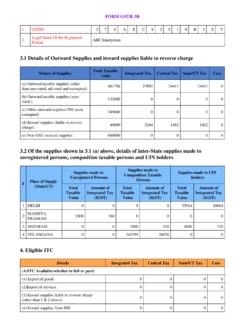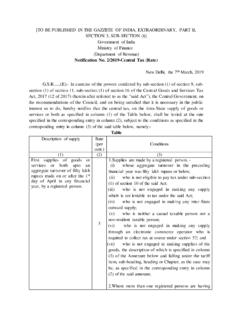Transcription of PROCEDURE CHECKLIST: Chapter 35: Performing …
1 PROCEDURE checklist : Chapter 35: Performing Tracheostomy Care Check (9) Yes or No PROCEDURE STEPS Yes No COMMENTS. 1. Places the patient in semi-Fowler's position. 2. Places a towel or linen-saver pad over the patient's chest. 3. Dons sterile gloves (alternatively, puts a sterile glove on the dominant hand and a clean glove on the other hand). 4. Suctions the tracheostomy (see PROCEDURE checklist Chapter 35: Performing Tracheostomy or Endotracheal Suctioning). 5. Removes and discards the soiled tracheostomy dressing in a biohazard receptacle; then removes and discards gloves. 6. Place the tracheostomy care equipment on the over-the-bed table and prepares the equipment using sterile technique: a. Pours hydrogen peroxide into one of the sterile solution containers and pours normal saline solution into the other one. b. Opens three 4 4 gauze packages; wets the gauze in one package with hydrogen peroxide;. wets the gauze in another package with normal saline; keeps the third package dry.
2 C. Opens 2 cotton-tipped applicator packages. Wets the applicators in one package with normal saline solution and wets the applicators in the other package with hydrogen peroxide. d. Opens the package containing a new disposable inner cannula, if available. e. Opens the package of Velcro tracheostomy ties or cuts a length of twill tape long enough to go around the patient's neck two times. Makes sure to cut end of the tape on an angle. 7. Dons sterile gloves (or sterile on dominant and clean on nondominant hand); keeps the glove on the dominant hand sterile. Handles the sterile supplies with the dominant hand only. 8. With the nondominant hand removes the oxygen source, if the patient has been receiving supplemental oxygen. 9. Unlocks and removes the inner cannula with the Copyright 2007, F. A. Davis Company, Wilkinson & Van Leuven/ PROCEDURE Checklists for Fundamentals of Nursing nondominant hand and cares for it accordingly: a.
3 Disposable Inner Cannula: Disposes of the inner cannula in the biohazard receptacle according to agency policy. b. Reusable Inner Cannula: Places the inner cannula into the basin filled with hydrogen peroxide. 10. Attaches the oxygen source to the outer cannula, if possible. 11. Cares for the inner cannula: a. Variation: Disposable Inner Cannula: Picks up the new disposable inner cannula, holding it by the outer locking portion. b. Reusable Inner Cannula: 1) Picks up the reusable inner cannula from the container of hydrogen peroxide and scrubs it with the sterile nylon brush, using the dominant hand. 2) Immerses the inner cannula in the container of sterile normal saline and agitates it until it is thoroughly rinsed. 3) Taps the inner cannula against the side of the container to remove excess fluid. 12. Removes the oxygen source, using nondominant hand, (if the patient requires supplemental oxygen). and reinserts the inner cannula into the patient's tracheostomy in the direction of the curvature.
4 13. Following manufacturer instructions, locks the inner cannula in place securely. 14. Reattaches the oxygen source, if indicated. 15. Cleans the stoma under the faceplate with the cotton-tipped applicators saturated with hydrogen peroxide, using a circular motion from the stoma site outward. 16. Uses each applicator only once and then discards it. 17. Cleans the top surface of the faceplate and the skin around it with the gauze pads saturated with hydrogen peroxide. Uses each gauze pad only once, and then discards it. 18. Repeats steps 15, 16, and 17, using the cotton- tipped applicators and gauze pads saturated with normal saline. 19. Dries the skin and outer cannula surfaces by patting them lightly with the remaining dry gauze pads. Copyright 2007, F. A. Davis Company, Wilkinson & Van Leuven/ PROCEDURE Checklists for Fundamentals of Nursing 20. Removes soiled tracheostomy stabilizers: a. Variation: Velcro Tracheostomy Holder: With an assistant stabilizing the tracheostomy tube, disengages the Velcro on both sides of the soiled holder and removes it gently from the eyes of the faceplate.
5 Discards the Velcro holder in the nearest biohazard receptacle. b. Variation: Twill Tape Tracheostomy Ties: With the assistant stabilizing the tracheostomy tube, cuts the soiled tracheostomy ties using bandage scissors. Avoids cutting the tube of the tracheostomy balloon. Removes the ties gently from the eyes of the faceplate and discards them in the nearest biohazard receptacle. 21. Has the patient flex his neck and applies new tracheostomy stabilizers. a. Variation: Velcro Tracheostomy Holder: 1) Unfastens the Velcro; threads one end of the tracheostomy holder through the eyelet of the faceplate, and fastens the Velcro. 2) Brings the holder around the back of the patient's neck and threads the remaining end of the tracheostomy holder through the empty eyelet of the faceplate. Fastens the Velcro, making sure the holder fits securely. 3) Places one finger under the holder to make sure the holder is securing the tracheostomy effectively, but is not too tight.
6 B. Variation: Using Twill Tape: 1) Threads one end of the twill tape into one of the eyelets on the tracheostomy faceplate;. continues to thread the twill tape through the eyelet, bringing both ends of the tape together. 2) Brings both ends of the twill tape around the back of the patient's neck. 3) Threads the end of the twill tape that is closest to the patient's neck through the back of the eyelet on the faceplate. 4) Has the assistant place one finger under the tape while tying the two ends together in a square knot. 22. Inserts a precut, sterile tracheostomy dressing under the faceplate and new tracheostomy stabilizers. 23. Disposes of used equipment/supplies in the appropriate biohazard receptacle, according to agency policy. Copyright 2007, F. A. Davis Company, Wilkinson & Van Leuven/ PROCEDURE Checklists for Fundamentals of Nursing Recommendation: Pass _____ Needs more practice _____. Student: Date: Instructor: Date: Copyright 2007, F.
7 A. Davis Company, Wilkinson & Van Leuven/ PROCEDURE Checklists for Fundamentals of Nursing





